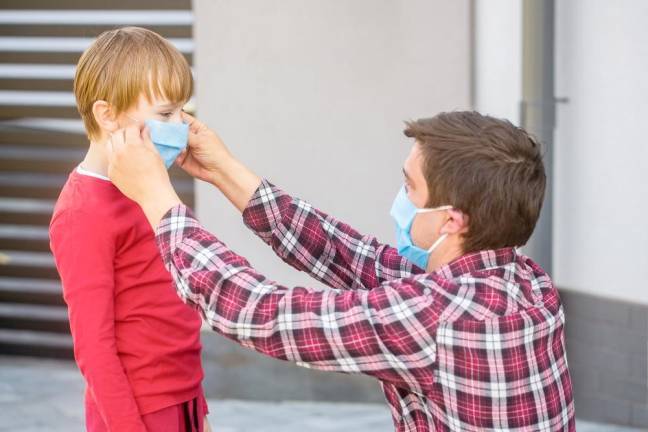I’ve spent a lifetime as an occupational health professional in industries where heavy-duty masks are often required. Lately I’ve been helping the Milford Mask Group of voluntary sewing enthusiasts, particularly regarding the best fabrics to use for making masks.
It’s good to see masks are being worn in Milford stores. Unfortunately, not everyone has a mask that fits right. Since we may end up wearing masks for quite some time, it’s worthwhile to make sure you can make your mask fit right, in effect, customize your mask.
A good fit is at least as important as the filtering material of a mask. If there is a gap between the mask and your face, air can reach your face more easily through this gap than through the filter, with its higher resistance to airflow, thus defeating the purpose of the mask. Also, a good fit means the mask is likely to be more comfortable to wear.
The most common problem I see is that the straps are too long, so the mask falls off over the nose. Fortunately, you can easily fix this in a number of ways, such as by knotting one of the straps to shorten it. Or you can cut the straps and re-tie them.
If the straps are made to go over the ears, you can add an additional strip to allow the strap to go around the back of the head. This extra length can be elastic or something cut the right length just to fit you. Many people find around-the-head more comfortable than over the ears anyway. Personally, I use a strip of Velcro to connect the ear straps and then tighten as needed. I’ve seen people with variations of different connectors like this too. This technique also works for straps that are too short.
Another problem, particularly for the rectangular masks that aren’t curved to fit around the nose, is that the edge of the mask can bulge up on the cheek and create a gap. This can be hard for you to notice yourself, so you may need to ask someone to visually check for you. You can close the gap in a number of ways, such as with a pin, clip, or tape, or use a needle and thread to make a tuck, or anything else that secures the excess material together.
Guys with beards probably already know that facial hair can interfere with mask efficiency, but many are reluctant to remove the beard altogether. You might try shaving cleanly only where the mask touches the skin, i.e. keeping a moustache and goatee. If your exposure is limited, a closely trimmed beard and a tight mask might be sufficient.
Incidentally, the quality of many homemade masks appears to be superior to the quality of the inexpensive commercial masks that have become available. A laboratory test is needed to really tell, but the good sewn fabric masks seem to fit much better.
However, plain bandanas don’t offer much protection. The studies show that a good sewn homemade mask can block up to 60 to 80 percent of virus droplets, but a bandana only 10 to 15 percent.
Dan MacLeod, M.A., M.P.H.
Milford, Pa.
